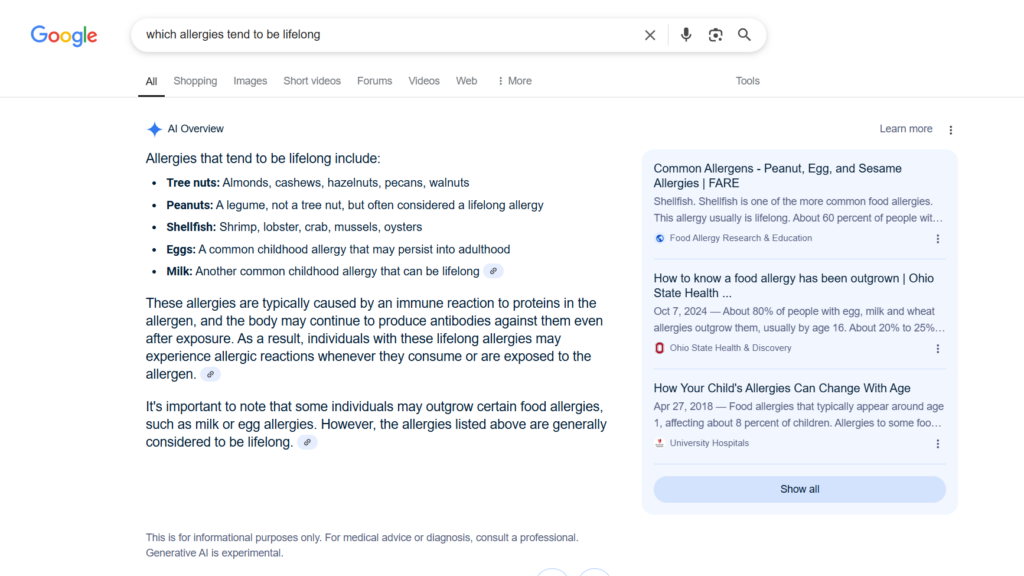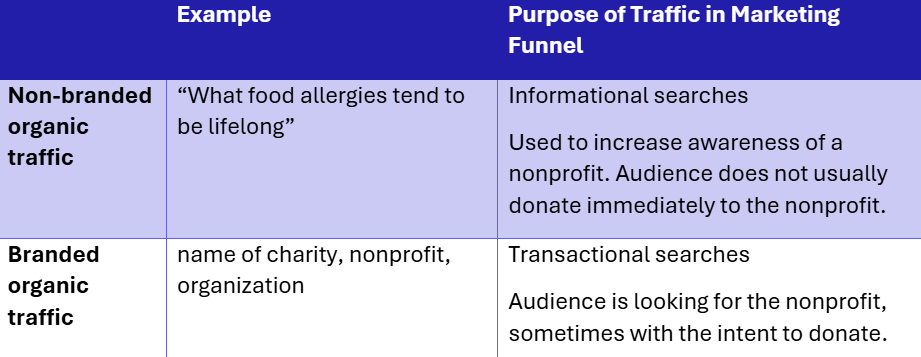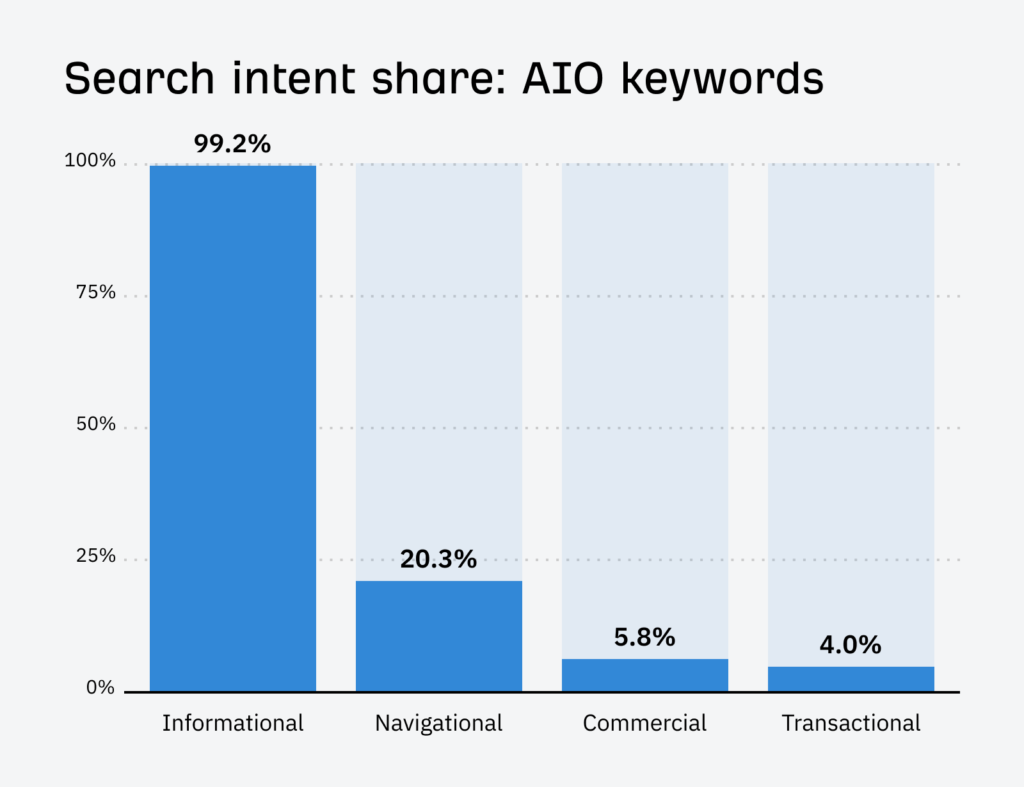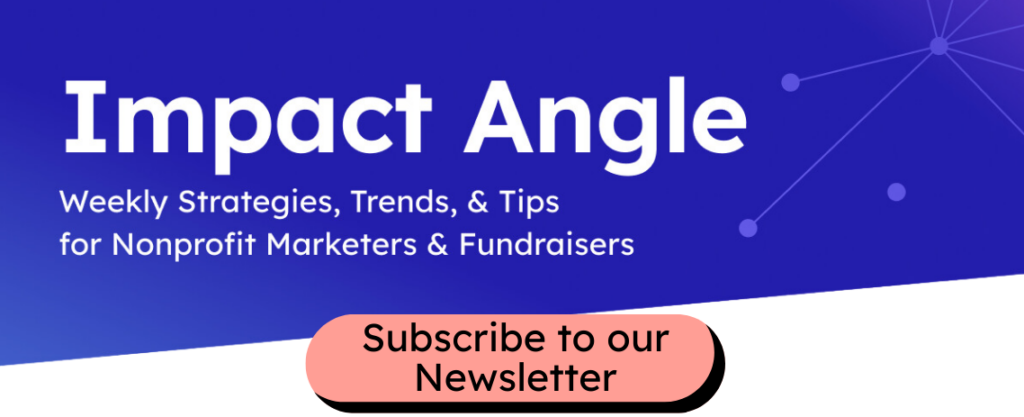How Google’s AI-Generated Search Results are Impacting SEO: What Nonprofits Need to Know

Have you noticed a new feature in the last year when you Google a question? Instead of typical search results with blue links and features like “People Also Ask,” and featured snippets you’re now often met with an AI-generated answer at the top of the page.

These AI-generated search results are AI Overviews (AIOs), and they are changing the search landscape – nonprofits need to be prepared for ongoing shifts. If your organization relies on organic traffic to drive awareness and engagement, here’s what you need to know:
- Expect changes to continue. AI search is evolving rapidly – this is just the beginning.
- If you’re a health nonprofit or association, expect a decrease in organic, non-branded traffic to your website.
- Don’t panic – web donation and email sign up conversions are holding steady. Clicks are dropping for non-branded, informational content. This content does not convert well for email sign up and donations.
- SEO still matters. Even as AI Overviews take up more space in search results, good SEO practices still play a key role in visibility.
- Google has de-valued organic traffic so paid search, content marketing, and diversifying channels will be critical for nonprofits moving forward.
How Are AI Overviews Impacting Click Through Rates?
AIOs aim to answer the user’s question instantly – often without requiring them to click on a single link. While these overviews do cite websites as sources, the need to click is drastically reduced.
This shift is especially important for nonprofits that rely on organic search traffic to drive awareness and engagement. However, not all traffic is impacted equally.
Purpose of SEO and Organic Traffic to Websites
The goal of SEO is to raise brand awareness and to nurture new audiences; not to convert audiences to donate.
There are two main types of organic website traffic:

Studies in the last year show that AIO are triggered 99% of time for informational search queries.

Source: https://ahrefs.com/blog/ai-overview-keywords/
Effects of AIOs on SEO and Non-branded Organic Traffic to Nonprofit Websites
There is a growing gap between how often a nonprofit appears in a search result (impressions) and how often that nonprofit’s website gets clicked in search results. Our data shows that non-branded, informational queries for health nonprofits are experiencing the largest drop in clicks.
The drop is most noticeable for lower-risk topics like general informational health knowledge. This suggests that AIOs provide direct answers in search results, reducing the need for users to click through to nonprofit websites.
How AIOs are Reducing Clicks
One health nonprofit saw a 40,000 drop in clicks to their website for the search term “protein in urine” over a period of six months (comparing pre and post AIO). But their website still ranked first in search results and was cited in AIO. This suggests that users found the answer they needed directly in AIO and no longer felt the need to visit the website, contributing to the reduced clicks.
AIOs are reshaping user behavior. Nonprofits may see fewer clicks from non-branded search terms, but that doesn’t necessarily mean a drop in engagement where it matters most.
Is the Drop in Clicks Because of AIOs Impacting Donations?
Take a deep breath, we are not seeing AIOs to have a major impact on donations, because users coming in through non-branded traffic are not typically donors.
Most organic non-branded visitors are in the early research phase and do not donate right away. However, well-optimized informational pages can still play a role in:
- Guiding users further down the engagement funnel
- Building awareness and credibility
- Driving future conversion opportunities
Long vs. Short Keywords: How AIOs are Changing Search Behavior
AIOs are more frequently triggered by long-tail keywords – think specific, multi-word phrases that provide detailed content (compared to more generic short-tail keywords). This is because longer queries offer more context, this allows AI (and voice search) to better understand user intent and generate relevant, comprehensive responses.
While short-tail keywords (fewer than four words) are increasingly appearing in AIO, the growth of longer, more specific queries are accelerating much faster. This trend underscores the importance of optimizing for long-tail keywords as AI-driven search continues to evolve.
For content optimization, the focus shouldn’t be on length but depth, comprehensiveness and readability. AI favors content that fully answers users questions in a clear, digestible way. Longer content is not inherently better – what matters is how effectively it addresses user needs.

What Nonprofits Should Do
Take proactive steps to maintain engagement and visibility – through targeted content and UX optimization and growing brand awareness on other channels.
- Set up Google Search Console so you can properly traffic your search traffic. This is critical because you can’t segment branded vs nonbranded organic traffic in GA4.
- Focus on In-Depth, Unique Content Your Audience Wants: Create comprehensive articles, case studies, research, and/or interactive resources that go beyond what can be summarized in an AIO. This encourages users to click through for a fuller picture.
Conduct user research (interviews, keyword research) to understand what content your audience wants and what channels they are on.
Google prioritizes trusted sources for high-risk topics. AI overviews appear more often for complex, multi-source queries. AI overviews may not appear for rapidly changing events, so getting content up right away and keeping up to date is important.
Scannable long-form content that has good information scent and helps users find the content they need quickly is still critical.
- Strengthen Branded Searches with Branded Paid Search Ads: Build a strong brand presence so that users already familiar with the nonprofit or those specifically searching for it continue to engage.
Use paid branded search ads to own your brand in search. Your paid ads should be telling potential donors about the need, their impact, and take them directly to the donation form. You want to protect your brand from competitors who are trying to take your brand searches.
- Diversify Traffic Sources: Rely less solely on organic search to increase brand awareness. Invest in paid search, organic social, email marketing, social media outreach, partnerships, and other channels your audience is on.
- Improve the user experience on your website. Focus on trying to convert people to who do click through to your website. Make organic landing pages more optimized for conversion and think about long tail user journey.
- There isn’t one easy answer anymore, it’s most critical to think through the full user journey and your marketing funnel.
Need a hand optimizing your content for SEO and AIO?
What’s Coming Next: Google’s AI Mode
AIOs are just the beginning – Google is currently testing AI Mode, a more advanced and interactive search experience. Think of it as a hybrid between AIOs and a chatbot – instead of displaying static summaries like AIOs, AI Mode allows users to:
- Ask follow-up questions, refine their searches, and explore related topics within search results
- Receive evolving answers based on user interactions
- Get hyper-local and personalized results
This means search is shifting from just answering questions to predicting what users want next.
As search becomes more personalized and predictive, it is more important than ever to understand your audience – what they are trying to accomplish, what questions they are asking, and what they will likely want to know next. The better your content aligns with user intent and anticipates their next steps, the more likely it is to stay visible and valuable in an AI-search landscape.
About Meredith Berents

Meredith Berents is a Digital & SEO Analyst at Allegiance Group + Pursuant. She has worked with nonprofits and associations for nearly a decade. Her approach pairs SEO with a deep understanding of user intent and conversion strategy – ensuring content is not only found but drives results.
Meredith specializes in SEO audits, analytics and translating complex data into clear, strategic insights.